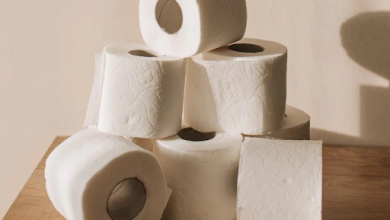Understanding UTI Home Test Kits: A Comprehensive Guide

Introduction
Urinary tract infections (UTIs) are a common health issue that affects millions of people worldwide. These infections occur in any part of the urinary system, including the kidneys, bladder, ureters, and urethra. Symptoms of a UTI home test kits can be uncomfortable and disruptive, prompting individuals to seek quick and effective solutions. One increasingly popular option is the UTI home test kit. This article provides an in-depth look at UTI home test kits, exploring their benefits, usage, accuracy, and how they compare to traditional testing methods.
What is a UTI Home Test Kit?
A UTI home test kit is a convenient and easy-to-use diagnostic tool that allows individuals to test for urinary tract infections in the comfort of their own homes. These kits typically include test strips that change color when dipped into a urine sample, indicating the presence of certain substances associated with UTIs, such as nitrites and leukocytes. The test strips are designed to provide quick results, often within a few minutes.
Benefits of Using a UTI Home Test Kit
Convenience: One of the primary benefits of using a UTI home test kit is the convenience it offers. Users can test for a UTI without having to schedule a doctor’s appointment, travel to a clinic, or wait for lab results.
Privacy: For many, discussing urinary issues can be embarrassing. A home test kit allows individuals to check for UTIs privately, without the need to disclose personal information to healthcare providers.
Cost-Effective: Home test kits are generally more affordable than a visit to a healthcare provider, making them an economical choice for many people.
Early Detection: Early detection of a UTI can prevent complications and the spread of the infection to other parts of the urinary system. Home test kits can help individuals identify a UTI at an early stage and seek appropriate treatment promptly.
How to Use a UTI Home Test Kit
Using a UTI home test kit is straightforward and involves a few simple steps:
Collect a Urine Sample: Most kits come with a sterile cup for urine collection. It’s important to use midstream urine for the sample to avoid contamination. This means urinating a small amount into the toilet first before collecting the sample in the cup.
Dip the Test Strip: Follow the instructions provided with the kit. Typically, you will need to dip the test strip into the urine sample for a specified amount of time (usually a few seconds).
Wait for Results: After dipping the strip, place it on a clean, dry surface and wait for the recommended time (usually 1-2 minutes) for the results to develop.
Read the Results: Compare the colors on the test strip to the color chart provided with the kit. Each color corresponds to different levels of nitrites and leukocytes, indicating whether a UTI is likely present.
Understanding the Results
The test strip usually tests for two main indicators of a UTI:
Leukocytes: These are white blood cells, and their presence in urine typically indicates an infection or inflammation in the urinary tract.
Nitrites: These are chemicals produced by certain bacteria. If nitrites are present, it often indicates a bacterial infection, as many UTI-causing bacteria convert nitrates (naturally found in urine) to nitrites.
A positive result for either or both of these indicators suggests a UTI, and it is recommended to seek medical advice for confirmation and treatment.
Accuracy of UTI Home Test Kits
While UTI home test kits are convenient and generally reliable, their accuracy can vary. Several factors can influence the accuracy of these tests:
Test Quality: The reliability of the test strip itself plays a crucial role. High-quality, FDA-approved kits are more likely to provide accurate results.
User Error: Incorrect usage of the test kit can lead to false results. It’s important to follow the instructions precisely.
Timing: The timing of the test can affect the results. For instance, testing too early or too late after collecting the urine sample may not provide accurate results.
Contamination: If the urine sample is contaminated (e.g., with menstrual blood or other substances), the results may be inaccurate.
Studies have shown that while home test kits can be quite accurate, they are not foolproof. A positive result should be followed up with a healthcare provider for confirmation and appropriate treatment.
Comparing UTI Home Test Kits to Traditional Testing
Traditional UTI testing typically involves a visit to a healthcare provider, where a urine sample is analyzed in a laboratory. Here’s how home test kits compare to traditional methods:
Speed: Home test kits provide results in minutes, whereas lab results can take several hours to days.
Convenience: Home test kits eliminate the need for a doctor’s visit, but they lack the professional guidance and comprehensive analysis available at a clinic.
Cost: Home test kits are generally less expensive than a clinic visit and lab tests.
Accuracy: Laboratory tests are more comprehensive and can detect a wider range of infections and other potential issues. They are also less prone to user error.
When to Use a UTI Home Test Kit
UTI home test kits can be particularly useful in certain situations:
Recurrent UTIs: Individuals who experience frequent UTIs can use home test kits for early detection and prompt treatment.
Symptoms Monitoring: If you start experiencing UTI symptoms (e.g., burning sensation during urination, frequent urge to urinate, cloudy or strong-smelling urine), a home test kit can help determine if an infection is present.
Follow-Up Testing: After completing a course of antibiotics for a UTI, a home test kit can help verify that the infection has cleared.
Limitations of UTI Home Test Kits
Despite their benefits, UTI home test kits have limitations:
False Positives/Negatives: Home test kits are not 100% accurate and can sometimes give false positive or negative results. For instance, some bacteria may not convert nitrates to nitrites, leading to a false negative.
Limited Scope: Home test kits primarily detect nitrites and leukocytes. They do not identify the specific type of bacteria causing the infection or test for other possible issues in the urinary tract.
Need for Medical Advice: A positive result from a home test kit should be followed up with a healthcare provider for confirmation and treatment. Self-diagnosing and treating based on home test results alone is not advisable.
Choosing the Right UTI Home Test Kit
With several UTI home test kits available on the market, it’s important to choose one that suits your needs. Here are some factors to consider:
FDA Approval: Choose a kit that is FDA-approved for reliability and accuracy.
Ease of Use: Look for kits with clear instructions and easy-to-read results.
Sensitivity: Some kits are more sensitive than others, meaning they can detect lower levels of nitrites and leukocytes.
Reputation: Consider kits with good reviews and from reputable manufacturers.
Steps to Take After a Positive Home Test Result
If you get a positive result from a UTI home test kit, it’s important to take the following steps:
Consult a Healthcare Provider: Schedule an appointment with your doctor to confirm the results and discuss appropriate treatment options.
Complete the Full Course of Antibiotics: If prescribed antibiotics, ensure you complete the entire course to prevent the infection from recurring or developing resistance.
Increase Fluid Intake: Drinking plenty of water can help flush out bacteria from your urinary system.
Practice Good Hygiene: Maintain good personal hygiene to prevent future infections. This includes wiping from front to back after using the toilet and urinating after sexual activity.
Preventing UTIs
While UTI home test kits are useful, preventing UTIs in the first place is ideal. Here are some tips to help reduce your risk:
Stay Hydrated: Drink plenty of water to help flush out bacteria from your urinary tract.
Urinate Frequently: Don’t hold in urine for long periods. Regular urination helps clear out bacteria.
Hygiene Practices: Always wipe from front to back after using the toilet to prevent bacteria from the anal region from spreading to the urinary tract.
Urinate After Intercourse: This helps flush out bacteria that may have entered the urethra during sex.
Avoid Irritants: Avoid using irritating feminine products like douches and powders that can disrupt the balance of bacteria in the genital area.
Wear Breathable Underwear: Choose cotton underwear and avoid tight-fitting clothing to reduce moisture build-up, which can promote bacterial growth.
Conclusion
UTI home test kits offer a convenient, private, and cost-effective way to detect urinary tract infections early. While they are generally reliable, they are not a substitute for professional medical advice and treatment. Understanding how to use these kits correctly and knowing their limitations can help you make informed decisions about your health. If you experience symptoms of a UTI or receive a positive result from a home test kit, it’s essential to consult a healthcare provider for confirmation and appropriate treatment. By taking preventive measures, you can reduce your risk of developing UTIs and maintain a healthy urinary system.









